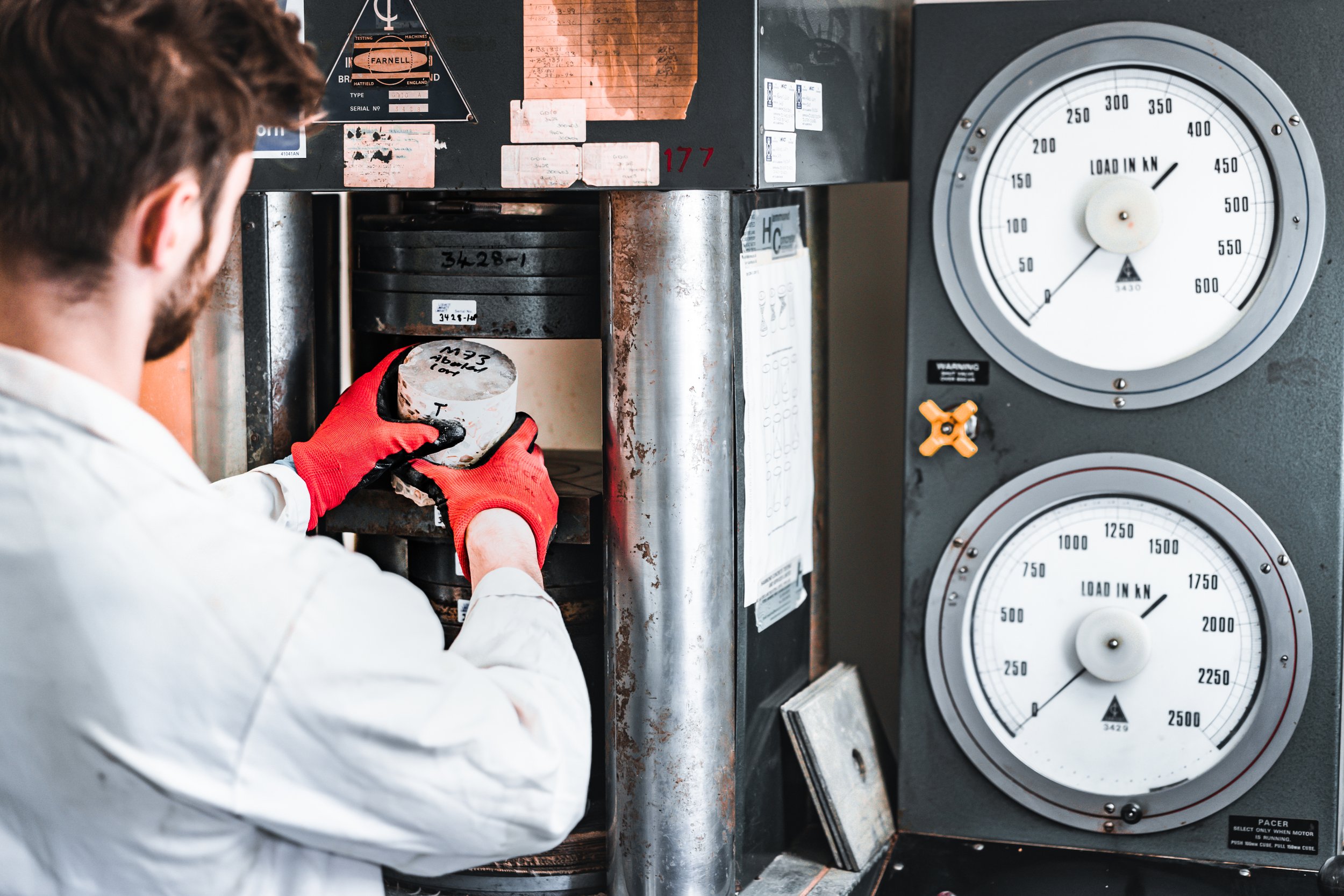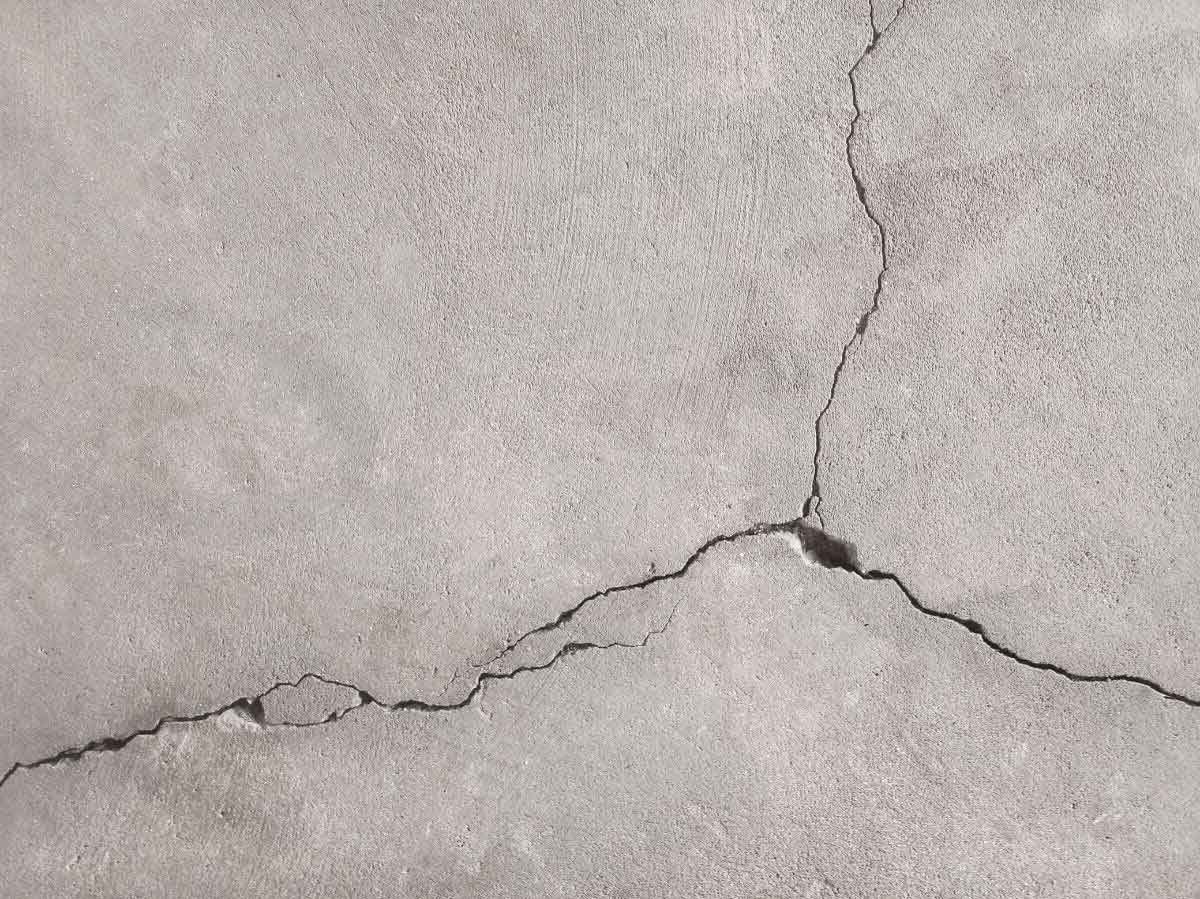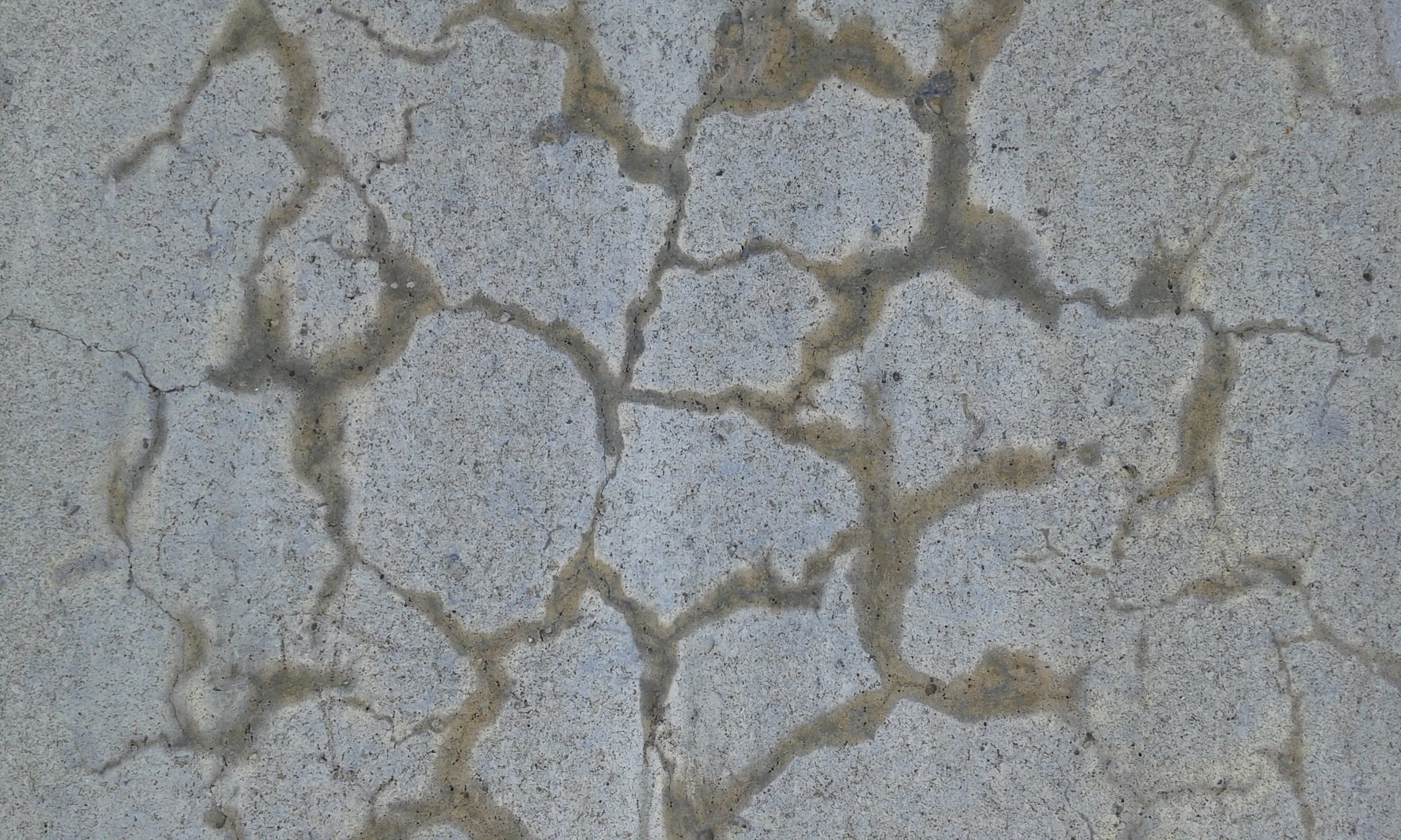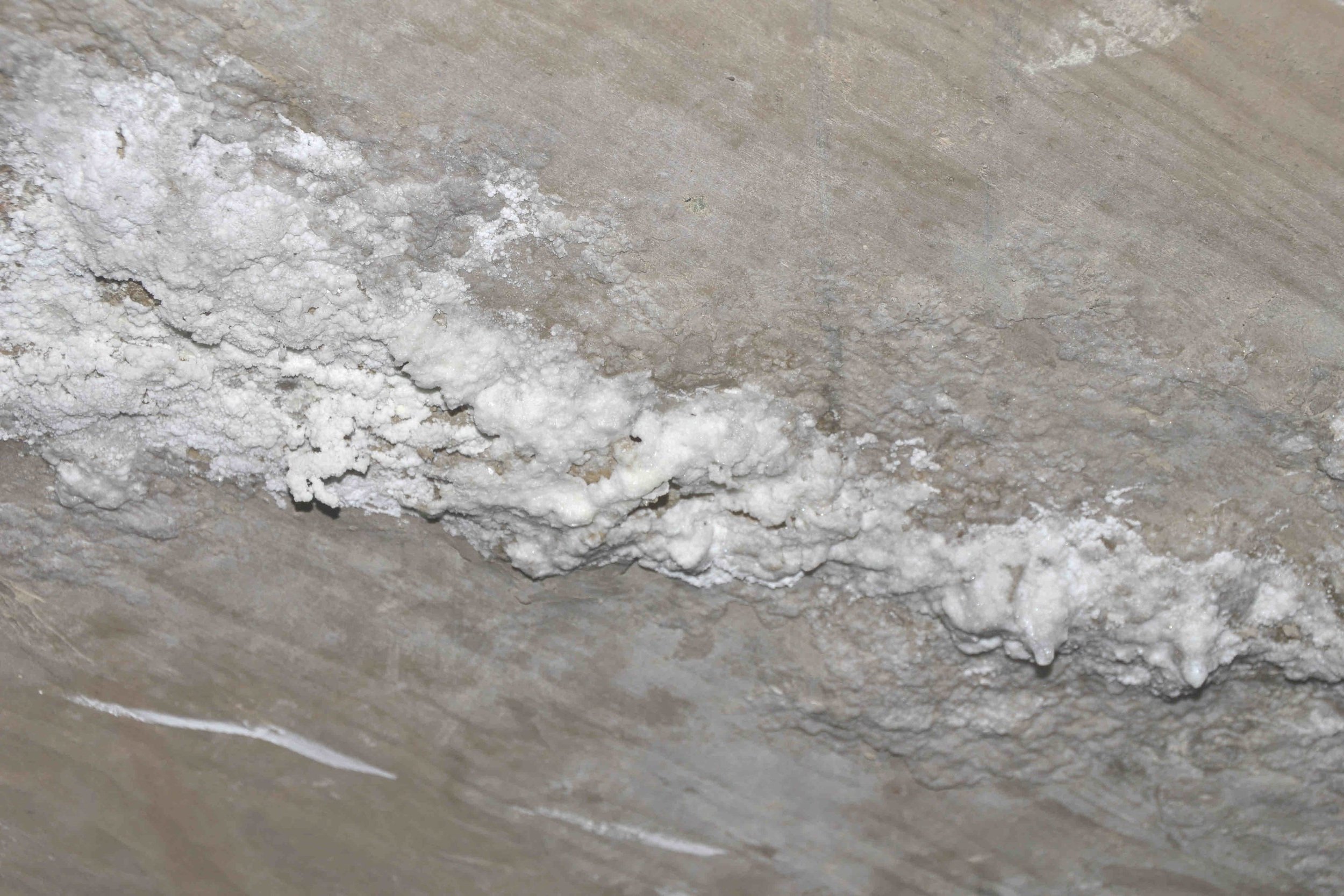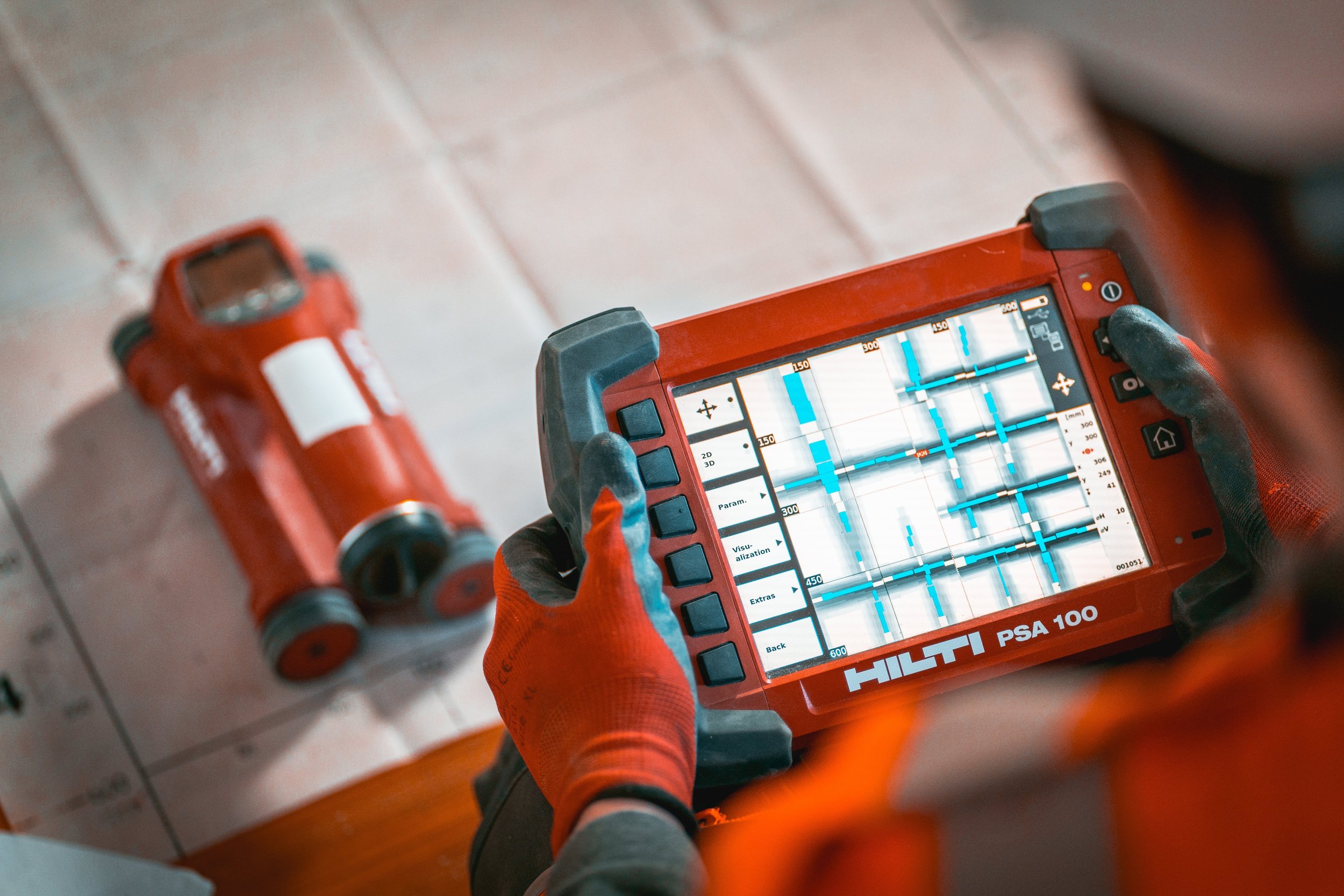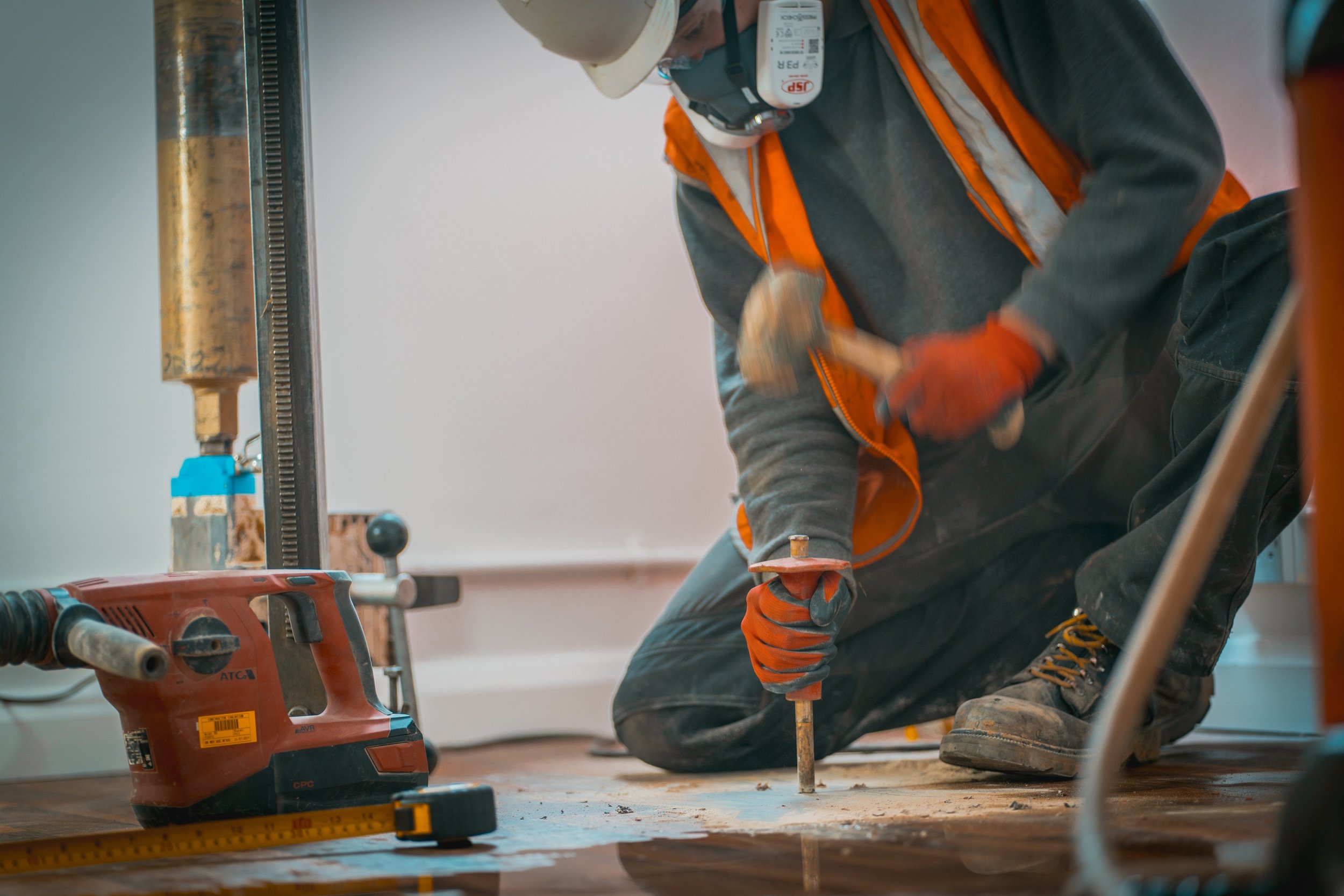
Concrete Testing
Concrete Testing
Concrete inspection and maintenance are crucial for ensuring the longevity, safety, and performance of concrete structures. Regular inspections help identify early signs of deterioration, such as cracking, spalling, and water infiltration, which can compromise structural integrity and lead to costly repairs if left unchecked. By prioritising concrete inspection and maintenance, property owners can prevent significant issues, ensure compliance with safety regulations, and ultimately protect their investment. Investing in these essential processes optimises the lifespan of concrete assets and promotes a sustainable approach to construction infrastructure.
Construction Diagnostics offers a suite of various destructive and non-destructive concrete tests to suit your needs. Please see below for the services we offer
Concrete Cover & Carbonation Testing
Concrete cover and carbonation testing are essential for assessing the durability and safety of structures. Concrete cover testing measures the thickness of concrete over reinforcing steel, crucial for protecting against corrosion. Insufficient cover can compromise structural integrity. Carbonation testing evaluates carbon dioxide penetration, reducing pH and risking corrosion of the steel. It involves drilling and measuring pH at varying depths. Both tests are vital for the long-term performance and durability of concrete structures.
Compressive Strength Testing
Concrete compressive strength testing determines concrete's ability to withstand axial loads. Standardised samples, typically cylindrical or cubical, are cured for about 28 days. A compression testing machine applies increasing axial force until failure, recording the maximum load to calculate compressive strength by dividing this load by the specimen's cross-sectional area. This testing is vital for assessing concrete quality, ensuring it meets design requirements, and confirming structural safety.
Chloride Ion Content Testing
Chloride ion testing evaluates chloride concentrations in concrete, as these ions can corrode steel reinforcement, threatening structural integrity. Samples are collected and analysed using titration or ion-selective electrodes to measure chloride levels, with results helping assess corrosion risk. This testing is vital for ensuring structural durability and safety, guiding maintenance, and informing construction practices in environments exposed to de-icing salts or seawater.
High Alumina Cement (HAC) Testing
High alumina cement concrete (HAC) is a type of concrete that incorporates calcium aluminates as its primary binding material, rather than the calcium silicates typically found in Portland cement. It was most commonly used from the 1950s-1970s in industrial settings thanks to its initial resistance to chemicals and high temperatures. However, the use of HAC was banned in new builds following concerns over its long-term durability, following some high profile structural collapses in the 1970s
Reinforced Autoclaved Aerated Concrete (RAAC) Inspections
Reinforced Autoclaved Aerated Concrete (RAAC) poses structural dangers due to potential deterioration, especially when exposed to moisture, leading to weakening and collapse risks. Its limited lifespan compared to traditional concrete may result in inadequate strength under heavy loads. Signs like cracking, sagging, or water ingress should be monitored as they indicate serious structural concerns. The use of RAAC in schools and public buildings raises safety alarms, requiring proper assessment and maintenance to mitigate risks.
Cement Content Analysis
High cement content in concrete can cause issues such as increased heat of hydration, leading to thermal cracking, especially in large pours and warm weather. It reduces workability, complicating placement and finishing, which may result in voids and decreased strength. Over time, higher cement levels increase shrinkage and cracking, reducing long-term durability by allowing moisture ingress and accelerating reinforcement corrosion. Environmentally, this also raises carbon emissions, affecting sustainability.
Petrographic Analysis
Petrographic analysis of concrete examines its materials and structure using microscopy. Concrete samples are prepared in thin sections for detailed study. Key goals include identifying mineral composition, assessing aggregate quality, and investigating the bond between cement paste and aggregates. This analysis reveals durability, strength, and potential issues such as alkali-silica reactions or freeze-thaw damage. It also identifies causes of concrete failures through microstructural analysis.
Half-Cell Potential Analysis
Half-cell testing of concrete evaluates the corrosion potential of embedded rebar. A copper/copper sulfate electrode is placed on the concrete surface alongside a reference electrode to measure the rebar's electrical potential in millivolts (mV). More negative values indicate a higher corrosion risk, while less negative or positive values suggest lower risk. This non-destructive test is vital for assessing concrete structures, guiding maintenance and rehabilitation decisions.
Ultrasonic Pulse Velocity (UPV) Testing
Ultrasonic pulse velocity (UPV) testing is a non-destructive method for assessing concrete quality by measuring sound wave speed. An ultrasonic transducer emits high-frequency sound waves, and the travel time between points is recorded. Wave velocity depends on concrete density, elasticity, and defects like cracks or voids. Analyzing pulse velocity helps engineers evaluate material integrity and strength; higher velocities indicate better quality, while lower velocities suggest structural issues.
Alkali Silica Reaction (ASR) Testing
Alkali Silica Reaction (ASR) Testing assesses the potential reactivity in concrete that can cause expansion and cracking. It involves preparing concrete specimens with reactive aggregates, immersing them in sodium hydroxide solution at controlled temperatures for a determined length. Measurements are taken pre- and post-exposure to evaluate dimensional changes. The results assist engineers in predicting concrete durability, enabling them to adopt preventive measures or select appropriate materials to mitigate ASR risks.
Sulphate Content Testing
Sulphate testing is an assessment process that evaluates the presence of harmful sulphate ions in the concrete mix. Sulphates can react with components of cement, leading to expansion and eventual deterioration of the concrete structure. This testing typically involves sampling the concrete and analysing it for soluble sulphate content using chemical methods. Understanding sulphate levels is vital in preventing potential damage, especially in regions where groundwater or soil contains high levels of sulphates.
Hydrostatic Diamond Drilling
Hydrostatic diamond drilling is a core drilling technique used in construction for accurate sampling in challenging environments. It uses diamond-tipped drill bits for effective penetration of concrete and rock, with water serving as coolant and for removing cuttings. The hydrostatic pressure generated enhances efficiency in obtaining precise core samples for structural evaluation and material assessment, ensuring the integrity and safety of construction projects by providing detailed insights into subsurface conditions.
BRE Screed Testing
BRE screed testing is an assessment of the quality and performance of screed materials in flooring, ensuring they meet required standards for structural integrity and durability. It evaluates factors such as thickness, density, moisture content, and adherence to specifications, which are critical for the longevity of flooring. BRE screed testing helps identify potential issues early, allowing for informed decisions regarding repairs or improvements, ultimately contributing to the overall safety and performance of construction projects.
Schmidt Hammer Testing
Schmidt hammer testing is a non-destructive method used to assess the compressive strength and uniformity of concrete and masonry structures. This technique involves a spring-loaded hammer that impacts the surface of the material and measures the rebound distance of the hammer after the impact. The rebound value correlates to the hardness of the concrete, allowing engineers to estimate the material's strength and identify potential weaknesses without causing damage.
Ferroscanning
Ferroscanning is a non-destructive testing technique used to locate the presence of ferrous metals within concrete structures. By employing electromagnetic induction, ferroscanning identifies and maps out the position of reinforcement bars, or any steel elements, allowing engineers to assess the structural integrity and evaluate potential issues such as corrosion. This method is essential for ensuring safety and longevity in construction projects, as it aids in making informed decisions regarding repairs or modifications.
Contact
If you have any further questions, or you wish to discuss your requirements, you can contact our experienced team of building surveyors here or using the contact form at the bottom of this page.
Our Services
Please Click on the tiles below to find out more about the services we offer
Contact Us
If you have any queries about any of our services please contact us, a member of our team will be happy to advise.


